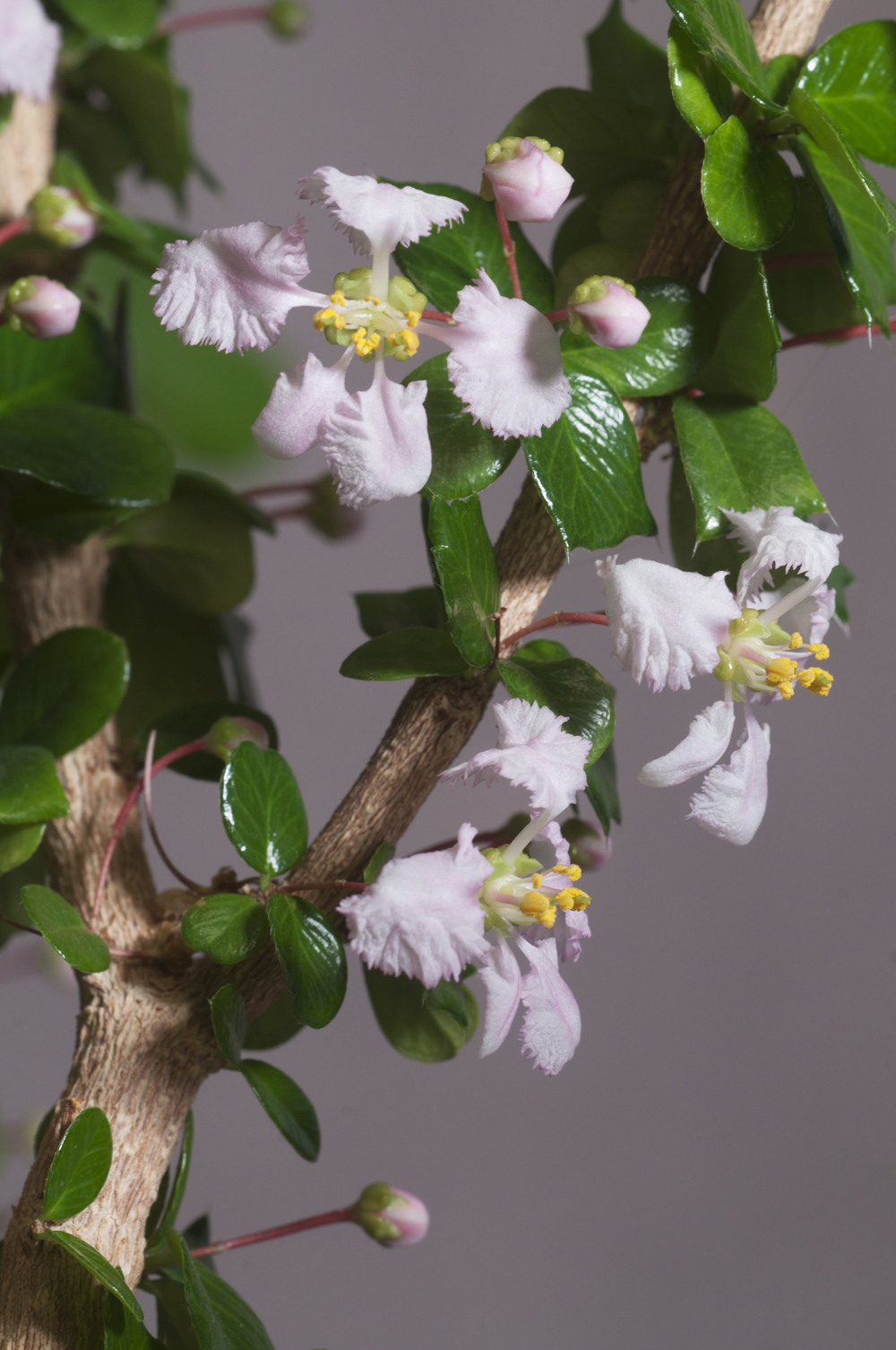Malpighia sp.
Common Name:
Malpighia

General Information:
The name, Malpighia, is used to honour Marcello Malpighia (1628 1693). He was a distinguished naturalist at Bologna, Italy. Malpighia are related to Barbados cherry and Surinam cherry. Dwarf shrub, evergreen opposite short petioled, spiny toothed leaves. Open, pink flowers and red fruit. There are three varieties of malpighia which are used as bonsai subjects. Each has unique characteristics.
In their native tropical American environment, they may be found in the under story of tropical forests or on rocky hill sides near streams where the soil is rich and moist. Plants may be obtained by collecting during the summer months, but can also be purchased from a nursery or started from seed, hard or soft wood cuttings or root cuttings taken in the summer.
Lighting:
Five hours of sunlight in the morning during the winter is ideal and in the summer they can have filtered sun or shade. If growing them under fluorescent lights, they require 14-16 hours of light a day.
Temperature:
Malpighias are sub-tropical, so temperature below 40 degrees may damage the leaves and freezing will kill the bonsai. To set flower buds, the night temperatures must be above 60 degrees.
Watering:
Do not let a malpighia completely dry-out. However, over watering causes yellow leaves, and so does too much sun. And, water on the blooms ruins them.
Feeding:
Fertilize once a month with a weak solution of fish emulsion or Peters water soluble fertilizer. Just before a flower show or exhibition, it may be fertilized more frequently. Malpighias are not salt tolerant.
Pruning and wiring:
Limb structure may be difficult to develop on Malpighia coccigera as they continue to produce growth all along the trunk. The clip and grow method (allowing desirable twigs to grow overly long before pruning back) works well. Keep unwanted growth rubbed off or pinched back. Malpighia pendiculata does not bud back easily on old wood. Regular pinching is necessary.
Propagation:
Cuttings, layering.
Repotting:
They prefer a slightly acid (pH 5.5 to 6.5) rich, moist but porous, well drained soil, Peat moss, garden soil, leaf mould and sharp sand in equal amounts is a good soil mix. The soil should be pasteurized as malpighias are highly subject to nematodes.
Pests and diseases:
Watch for aphids and spider mites.
Some species suitable for bonsai:
Malpighia coccigera, known as Singapore holly, southern holly, Florida holly, or miniature holly and is native to the West Indies. Its pink, about the size of a dime, five fringed petals. Tip pruning does not sacrifice bloom. Blooms are all along the branch. Mature growth is woody, with grayish, bark, somewhat stiff in character. New growth tends to be horizontal. The Singapore holly lends itself to a variety of styles, including root over rock.
Malpighia glabra, or Barbados cherry is native in southern Texas, the West Indies, northern South America, Central America and Mexico. Its natural form is that of a shrub or small tree 10 to 15 feet tall. It has leaves which are oval with pointed ends, neither glossy nor leathery, very dark green and small in size. Branches are flexible, the flower is rose-pink and the fruit is edible, a rich source of Vitamin C. Barbados cherry usually looks best in an informal upright style.
Malpighia pendiculata or weeping malpighia. Its natural form is that of a low shrub with pendulous, weeping twigs and branches. The flowers are rose-pink, often several together in a cyme. It’s fruit is small and inedible. It has a weeping growth habit, cracked branches will heal, and leaves are pointed.
Bibliography:
“From the Teacher’s Notebook” by Lois Murrock, Florida Bonsai, XVI, 1:51- 52.
“The Malpighias” by Marian Borchers, Florida Bonsai, VI,3:10-15
Florida Bonsai VI:3:10-15,29-31,32-33
Florida Landscape Plants by Watkins et. al., pg 217
Compiled by Sabrina Caine and Thomas L. Zane
